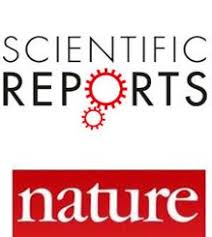Ver ítem
- xmlui.general.dspace_homeCentros e Institutos de InvestigaciónCICVyA. Centro de Investigación en Ciencias Veterinarias y AgronómicasInstituto de BiotecnologíaArtículos científicosxmlui.ArtifactBrowser.ItemViewer.trail
- Inicio
- Centros e Institutos de Investigación
- CICVyA. Centro de Investigación en Ciencias Veterinarias y Agronómicas
- Instituto de Biotecnología
- Artículos científicos
- Ver ítem
A Coxiella mutualist symbiont is essential to the development of rhipicephalus microplus
Resumen
The cattle tick Rhipicephalus microplus is a hematophagous ectoparasite that causes important economic losses in livestock. Different species of ticks harbor a symbiont bacterium of the genus Coxiella. It was showed that a Coxiella endosymbiont from R. microplus (CERM) is a vertically transmitted mutualist symbiont, comprising 98% of the 16S rRNA sequences in both eggs and larvae. Sequencing of the bacterial genome revealed genes for biosynthetic pathways
[ver mas...]
The cattle tick Rhipicephalus microplus is a hematophagous ectoparasite that causes important economic losses in livestock. Different species of ticks harbor a symbiont bacterium of the genus Coxiella. It was showed that a Coxiella endosymbiont from R. microplus (CERM) is a vertically transmitted mutualist symbiont, comprising 98% of the 16S rRNA sequences in both eggs and larvae. Sequencing of the bacterial genome revealed genes for biosynthetic pathways for several vitamins and key metabolic cofactors that may provide a nutritional complement to the tick host. The CERM was abundant in ovary and Malpighian tubule of fully engorged female. Tetracycline treatment of either the tick or the vertebrate host reduced levels of bacteria in progeny in 74% for eggs and 90% for larvae without major impact neither on the reproductive fitness of the adult female or on embryo development. However, CERM proved to be essential for the tick to reach the adult life stage, as under antibiotic treatment no tick was able to progress beyond the metanymph stage. Data presented here suggest that interference in the symbiotic CERM-R. microplus relationship may be useful to the development of alternative control methods, highlighting the interdependence between ticks and their endosymbionts.
[Cerrar]

Autor
Garcia Guizzo, Melina;
Parizi, Luís Fernando;
Nunes, Rodrigo Dutra;
Schama, Renata;
Albano, Rodolpho M.;
Tirloni, Lucas;
Oldiges, Daiane Patrícia;
Pilz Vieira, Ricardo;
Cruz Oliveira, Wanderson Henrique;
De Souza Leite, Milane;
Gonzalez, Sergio Alberto;
Farber, Marisa Diana;
Martins, Orlando;
Da Silva Vaz, Itabajara;
Oliveira, Pedro L.;
Fuente
Scientific Reports 7: 17554 (Diciembre 2017)
Fecha
2017-12
Editorial
Nature Publishing Group
ISSN
2045-2322
Formato
pdf
Tipo de documento
artículo
Palabras Claves
Derechos de acceso
Abierto
 Excepto donde se diga explicitamente, este item se publica bajo la siguiente descripción: Creative Commons Attribution-NonCommercial-ShareAlike 2.5 Unported (CC BY-NC-SA 2.5)
Excepto donde se diga explicitamente, este item se publica bajo la siguiente descripción: Creative Commons Attribution-NonCommercial-ShareAlike 2.5 Unported (CC BY-NC-SA 2.5)


